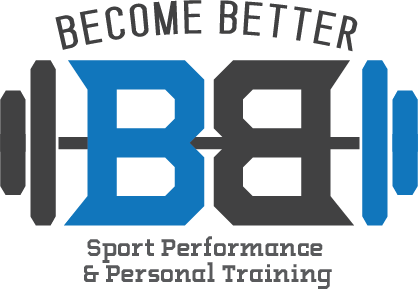Agility Ladders are by far the most common form of “agility training.” The problem is that using an agility ladder actually does very little to improve your agility. By definition, agility is the ability to move quickly and easily. In sports this is exemplified by an athlete's ability to react to an event and change directions as fast as possible then move quickly to where they need to be.
For example, in volleyball when a ball is set to the outside the middle has to react to that and move their body to get into position to block. After the ball is hit, the rest of the defense will have to react to where the ball is heading and move to make the play.
In football, when you are trying to avoid getting tackled you react to your teammates blocking and the opponents who are coming at you to try and take you down. This is reversed for those trying to tackle the ball carrier.
All of these movements require an athlete to be agile, but let's break down exactly how they effectively make these movements happen and what drills might help an athlete perform them better.
The first thing is reaction time. You can be the fastest and quickest player in the world, but if you react slowly to a scenario you will never get the chance to show off that speed. Some refer to this as “reactive agility.” Regardless of the name it helps an athlete perform better. An agility ladder isn’t going to do anything for this performance measure because you’re not reacting to anything during the drill. When using the ladder you are given the exact placements of where and when to place your feet. A better drill would have you move your feet/body in reaction to a stimulus that is unknown to you before the drill starts. I would even make the argument that the best way to improve this reactive agility ability is to simply play your sport. A lot of reaction ability is an athlete's ability to anticipate the movement before it happens. For example, in volleyball if you see a hitter drop their elbow you might react by anticipating them tipping before they actually contact the ball. This anticipation can help you make the play, but it’s also something that you wouldn’t have been able to do if you hadn’t played the game many times to see it. Even a good reactionary drill won’t help you see certain tells in the sport you play. In a future article I will highlight some of these other drills you can try.
Speed and quickness is another component of agility. In most cases this isn’t top end speed, but rather an athlete's ability to accelerate quickly. To accelerate quickly you need to produce a lot of force in a short amount of time (referred to as Rate of Force Development [RFD]). An agility ladder won’t help with this because you're only moving your feet quickly and not actually moving your body quickly since you’re not producing any force. Have you ever seen a sprinter take really small steps in order to reach their top speed? I hope not. They’re trying to push as hard as they can through the ground to develop as much force as possible in the shortest amount of time to get moving faster than everyone else. To increase your speed you can perform basic weight training exercises for your legs. Back Squats have been shown time and time again to improve sprint times. Another crazy idea that is really effective is to simply go out and sprint. Again, top end speed may not be important, but you could train speed/accelerating by simply sprinting for short distances.
Change of direction is the final component of agility we will talk about. To do this you need to be able to accelerate, decelerate, stop and re-accelerate in any direction very quickly. Just like we stated above, you’re not actually moving your body very fast to begin with, so you’re not accelerating or really decelerating by using the ladder. Your body's ability to absorb force and use that energy is a big component of being able to decelerate and accelerate again. Plyometric drills such as pogo jumps and drop jumps can be very effective for this training. Other sprinting and cone drills where you have to plant your feet and change directions could also help.
Focusing on your body positioning with drills can also help you be more agile, but when confined to the space of the small yellow boxes you can’t really accomplish this.
Although I believe agility ladders are almost completely useless for improving one’s agility, they can have some use in training. For young kids you can teach them body awareness by having them do basic drills of moving their feet in the correct pattern. Teaching this could help them with their overall body control. More control can equate to better efficiency of movement which could help train agility in the future. The final use of this ladder could simply be for a warm-up. You can get an athlete’s brain and legs firing with some simple movements to start the workout. It could be used as a way to prepare the body for the real agility drills, plyometric, or weight training drills that could follow.
In conclusion, the use of an agility ladder is going to have very little effect on improving your agility. I strongly suggest that you consider playing your sport as the bulk of your agility training. Your extra training time would be better spent on sprinting, jumping/plyometrics, and basic weight training to improve not only your agility, but also your overall performance in general on the court/field.

